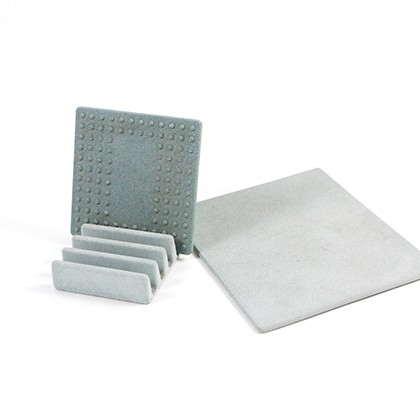

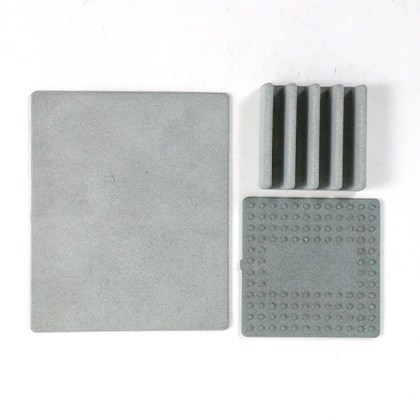
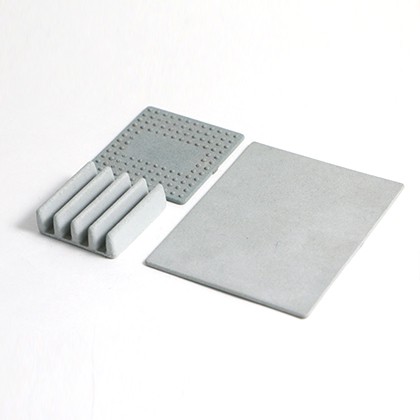
XL-25 Ceramic Heat Spreader
-
●Open-porous structure increases air contact area
-
●Best for limited space
-
●High breakdown voltage/ high resistance
-
●Good thermal conduction/ Low thermal expansion coefficient
-
●EMI reduction
-
●High reliability
●Open-porous structure increases air contact area
●Best for limited space
●High breakdown voltage/ high resistance
●Good thermal conduction/ Low thermal expansion coefficient
●EMI reduction
●High reliability
Application
Suitable for limited installation space and can adapt to severe changes in the environment
Electronic components: Electric Vehicles, 5G, Autopilot System, Mobile Phone, AIOT, HPC (High Performance Computing),Server, IC, CPU, MOS, LED back light, Mother Board, Power Supply,Heat Sink, LCD-TV, Notebook, PC, Telecom Device, Wireless Hub, DDR ll Module, NIC, screens, etc.
Property table
| Standard Sizes (mm) | ||
| 1. 10x10x2.0 (Flat) | 2. 15x15x2.5 (Flat) | 3. 15x15x5.0 (fin) |
| 4. 20x15x2.0 (Flat) | 5. 20x20x2.0 (Flat) | 6. 20x20x2.5 (Flat) |
| 7. 22x22x2.5 (Flat) | 8. 30x30x2.0 (Flat) | 9. 30x30x2.5 (Flat) |
| 10. 30x30x5.0 (fin) | 11. 35x35x10.0 (fin) | 12. 40x40x2.5 (Flat) |
| 13. 40x40x3.0 (Embossed) | 14. 40x40x5.0 (fin) | 15. 40x40x10.0 (fin) |
| 16. 50x50x3.0 (Embossed) | 17. 50x50x5.0 (fin) | 18. 50x50x10.0 (fin) |
Water absorption
| Properties | Unit | XL-25 | Tolerance | Test Method |
| Thermal Conductivity |
W/m•K |
10 |
±0.67 |
– |
| Color |
– |
Gray/ Green |
– |
– |
| Dielectric Breakdown Voltage | KV/mm | ≥0.5 | – | ASTM D149 |
| Bulk Density |
g / cm3 |
1.89 |
±0.18 |
CNS 619 |
| Flexural Strength |
kgf / cm2 |
47.5 |
– |
CNS 12701 |
| Porosity |
% |
25 |
– |
CNS 619 |
| Water Absorption | % | 16 | – | CNS 619 |
| Operating Temperature |
°C |
<500 |
– |
– |
| Linear Temperature Expansion Coefficient |
10-6 |
4.13 |
– |
RT~300°C |
| Main Composition |
– |
Sic/ Al2O3/ SiO2 |
– |
– |
| Hardness |
Moh’s |
5~6 |
±0.6 |
DIN En101-1992 |
| ●Compliance with RoHS | ||||
|
●Need samples? |
||||
(The above table is only for reference. For the lastest SPEC please press DATASHEET button for download)
Related materials Recommended
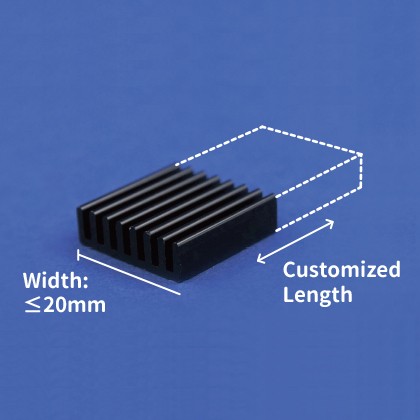
-
●Good thermal dissipation ability
-
●Customized design
-
●Easy to assemble
Heat sinks(mainly made of aluminum or copper) is a kind of metal contain high thermal dissipation ability, light weight and easy to have machining. It is one of the popular heat dissipation products and can stick on the surface of heat source. How to increase the thermal conductivity and heat dissipation surface in order to increase the product’s heat dissipation efficiency is the hard issue of this industry. Stamping, extrusion, die casting and forging are the production way of heat sinks. These products and be the main components of heat dissipation for various applications and their application shell.
High heat dissipation, easy processing, lightweight metal heat sink, and the possibility of different surface treatments (anodizing, grinding, electrolytic anode coloring, sandblasting, galvanizing, tinning, nickel plating, polishing, baking varnish), in discussion with customers In the case of heat dissipation module, according to the different needs of customers, it can help customers to have more and more diversified heat dissipation scheme designs in the module design.
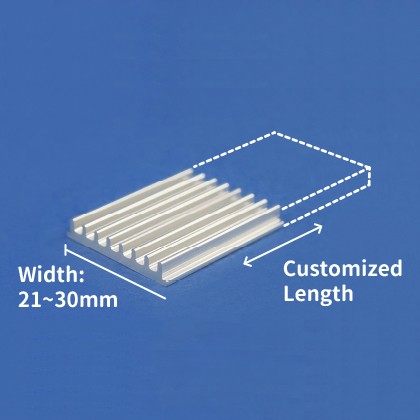
-
●Good thermal dissipation ability
-
●Customized design
-
●Easy to assemble
Heat sink (mainly made of aluminum or copper) is a kind of metal contain high thermal dissipation ability, light weight and easy to have machining. It is one of the popular heat dissipation products and can stick on the surface of heat source. How to increase the thermal conductivity and heat dissipation surface in order to increase the product’s heat dissipation efficiency is the hard issue of this industry. Stamping, extrusion, die casting and forging are the production way of heat sink. These products and be the main components of heat dissipation for various applications and their application shell.
The metal heat sink is a metal with good thermal conductivity, lightweight and easy processing (mostly aluminum or copper), which can be attached to the heating element on the surface, the heat sink is manufactured by stamping, extrusion, die-casting, and forging. As the main heat dissipation element, the intention is to provide a larger surface area on the heating element, so that heat can be more efficiently transferred to the surrounding environment.
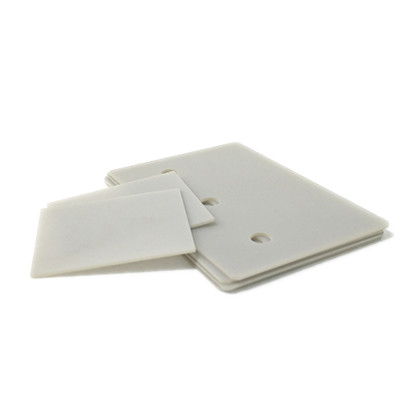
-
●Best for limited space
-
●High thermal conduction/ Low thermal expansion coefficient
-
●Reliable insulation performance
-
●High reliability
-
●Non-toxic/ High temperature resistance
